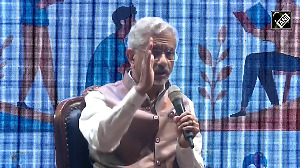With India’s gig economy projected to double in size, reaching over 10 million workers in the coming years, Ola Electric unveiled its new line of budget-friendly e-scooters, starting at under Rs 40,000.

The market responded positively, with Ola Electric’s stock rising by 5.67 per cent, closing at Rs 73.47 on the BSE.
The new range includes the Ola Gig, priced at Rs 39,999, specifically designed for gig workers making shorter trips.
The S1 Z series starts at Rs 59,999, offering an affordable alternative to the original S1 model.
Ola Electric chief executive officer Bhavish Aggarwal posted on X that the S1 Z is the same as the S1 but at a more accessible price point.
In another post, he wrote: “India’s gig economy will be 2x in the next few years with more than 10 million workers.
"These workers unfortunately have to ride poor quality products at a much higher price.”
The four new models — Ola Gig, Ola Gig+, Ola S1 Z, and Ola S1 Z+ — target different use cases, from gig workers to urban commuters and small business owners.
Deliveries for the Ola Gig and Gig+ will begin in April 2025, while the Ola S1 Z and S1 Z+ are slated for May 2025.
Reservations for these models are open, starting at Rs 499.
Kripa Ananthan, head of design at Ola Electric, noted that the pricing is highly competitive — 50-60 per cent lower than other market options — reflecting the company’s expectation of a twofold surge in demand.
“We expect the gig worker segment to expand rapidly, doubling from the current 5 million to 10 million in the coming years,” said Ananthan.
In another X post, Aggarwal confirmed that Ola Electric and Ola Cabs will work together to scale the adoption of these new products.
Competition and features
Ola’s Gig scooters will face competition from existing models such as Yulu’s electric scooter Wynn, priced at Rs 59,999, which offers a top speed of 25 kmph and a range of 70 km; Kinetic Green’s Zing Big B, priced at Rs 75,990, with a similar top speed of 25 kmph and a range of 100 km; and Okinawa’s R30, priced at Rs 61,998, with a top speed of 25 kmph and a range of 60 km.
The Ola Gig, with an IDC-certified range of 112 km and a top speed of 25 kmph, the scooter is equipped with a removable 1.5 kilowatt-hour (KWh) battery.
For those requiring greater range and payload capacity, the Ola Gig+ — priced at Rs 49,999 — features a removable single or dual battery setup with an IDC-certified range of 81 km (157 km with dual batteries) and a top speed of 45 kmph.
Both models are designed with gig economy workers and fleet operators in mind, which will be sold in retail as well as battery-as-a-service.
Ananthan further highlighted the emphasis on modularity and user-centric design.
“Our scooters are engineered for reliability and ease of use.
"The removable battery feature adds flexibility, whether it’s for charging at home or powering home appliances using the new Ola PowerPod, which transforms the battery into a portable inverter,” she explained.
The Ola S1 Z targets urban commuters, students, and seniors, with a price tag of Rs 59,999.
It features a dual 1.5 kWh removable battery setup and offers a range of up to 146 km.
The Ola S1 Z+, priced at Rs 64,999, is geared towards small business owners and light commercial users.
It shares the performance specs of the S1 Z, including the removable battery system.
Market position and expansion plans
Ola Electric has regained market share, reaching 31 per cent in October after a slump, driven by festival season sales and improved delivery metrics.
The company sold 41,605 units in October, up from 24,716 in September, while competitors like Bajaj Auto, TVS Motor Company, and Ather Energy held 25.7 per cent, 22.3 per cent, and 11.9 per cent market share, respectively.
Its market share had previously fallen from a high of 53.6 per cent in April to 32.1 per cent in August, amid rising complaints over after-sales service and quality issues.













 © 2025
© 2025